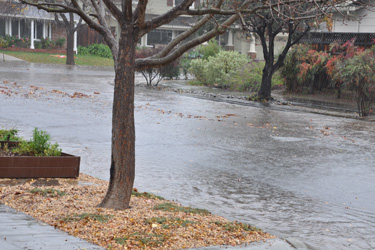Minimising the effects of El Nino
The greenlife way!
Unless you were living under a rock late in 2015, you will have heard, seen, felt and most likely experienced the effects of El Niño. The extreme weather played havoc on gardens and noticeability affected growing patterns for plants, trees and edible crops.
So what exactly is El Niño? It is an underlying climate pattern that can cause more extreme weather. Its impact is being felt in different ways across New Zealand:
- cooler temperatures
- more rain in the west
- drier conditions in the north and east
- stronger winds – primarily on the West Coast and in Canterbury.
El Niño occurs every 3-7 years on average, during which easterly Pacific “trade winds” weaken for a prolonged period or even reverse direction, moving warm surface waters eastward along the equator and preventing cold, deep water from upwelling on the tropical west coast of South America.
During El Niño, New Zealand generally experiences stronger or more frequent winds from the south-west in spring and west in summer, typically leading to cooler temperatures, more rain in the west and drier conditions in the north and east.
Every El Niño is different and its impacts on New Zealand’s climate cannot be easily predicted. That said forecasters are predicted that the strong El Niño conditions of spring 2015 would continue over summer and into autumn 2016.
El Niño has bought, and will continue to bring, more frequent and extreme adverse weather events, so you need to think about how you will manage your way through. Some may say “hope for the best but plan for the worst” but we gardeners know better… Plant more plants, trees and shrubs!
One strategy to mitigate the effects of El Niño is simply to convert impermeable surfaces (e.g. concrete) to permeable ones (e.g. grass). As discussed in Kiwi Gardener issue 429, this helps control excess rain water and also increases the amount of irrigation water available to plants (by decreasing summer run-off).
Riparian restoration (replanting the banks of streams, rivers, lakes and wetlands) will also help mitigate the effects of El Niño. Riparian planting reduces erosion and sedimentation by trapping sediment before it enters streams – see issue 409. These plants also buffer the impacts of floods by acting as a sponge to hold excess water and keep soil in place.
Large trees provided shade and cooling to escape the hot dry conditions that El Niño can bring. Best of all seeking shade under a tree, as opposed to turning up your air con. The Greenlife Matters article in issue 401 discusses how the shade given by established trees provides an instant natural cooling effect and saves your power usage. So that’s more money for you and less environmental impact, not to mention how relaxing it is. Akin to this trees provide shelter from strong winds.
So next time people talk about the El Niño weather patterns discuss how plants, trees and green spaces can make a positive difference. And of course get into your garden and community areas to plant more plants, trees, shrubs and ground covers. Not only will they look good but they will minimise the effects of El Niño from day one.

29-Mar-2016


